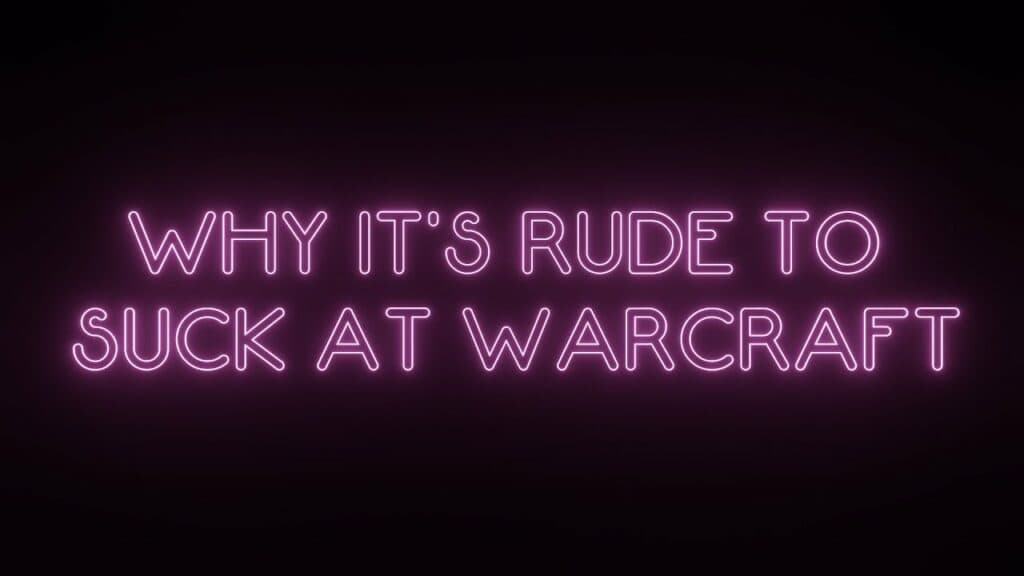Feel like you’re missing out? Here’s best practices for getting into Dragonflight endgame raid groups and pulling your weight.
Nothing epitomizes the World of Warcraft experience more than raiding. Massive dungeons, a big group of players all attempting to get on the same page. And let's not forget the Lord of the Flies-esque scramble for loot if and when a boss gets downed. While we're only at phase one of the Dragonflight endgame raid release schedule there's no better time than now to get into the groove.
That said, the game itself doesn't ever stop to explain the why and how of raiding--let alone the best practices for even getting into a group. The player must trudge through the muck via trial and error and doing so may very well spoil the experience completely.
As we continue our look at the Dragonflight endgame, let's venture down into the depths and learn how to raid. We'll give best practices for gearing up, how to find groups, and what you should do once you're there.

Dragonflight endgame: Reaching raid ilvl
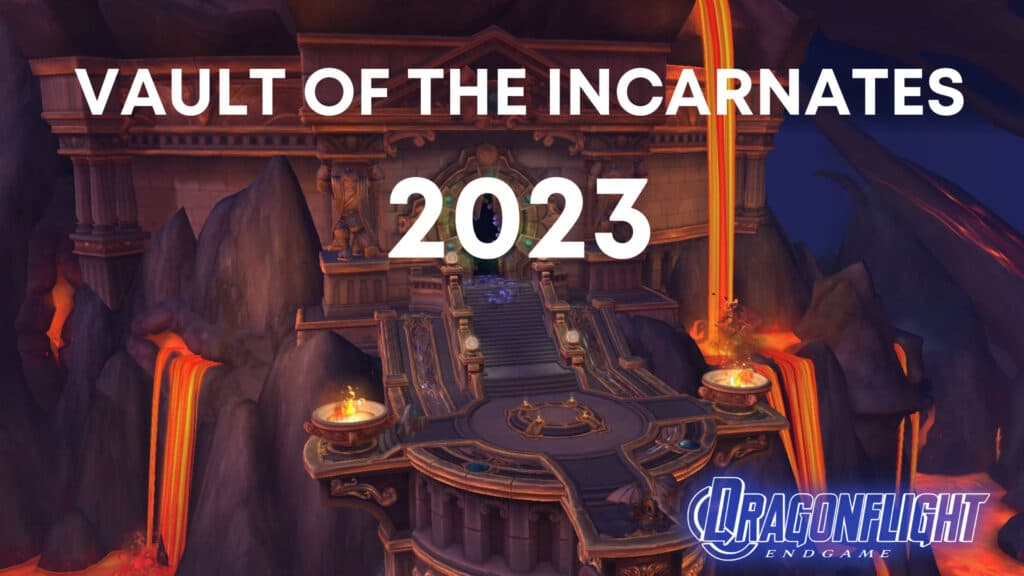
So, you hit max level and are now ready for some Dragonflight endgame content. What do you do? If you remember from part one we mentioned that the first hurdle will be your gear score, also called your item level.

Dragonflight endgame item level takeaways:
- Aim for item level 359 to qualify for Looking For Raid
- Craft the level 70 armor your profession offers
- World quests and Heroics provide the best entry-level armor
Your item level is the overall average score of all equipped gear and is shorthand for whether or not a player is "strong enough" to raid. In general, it's also just a useful way to measure how far along a player is on their path. The current cap for gear score is somewhere in the 420 level, to give an idea where the best of the best fall.
But for you, the new player that's never stepped foot into a raid, the first magic number is 359. This is the minimum gear score to queue for the Looking For Raid of Vault of the Incarnates across all three available wings. This may seem like a big hurdle given that, when you hit 70 your item level is probably in the high 200s or low 300s.
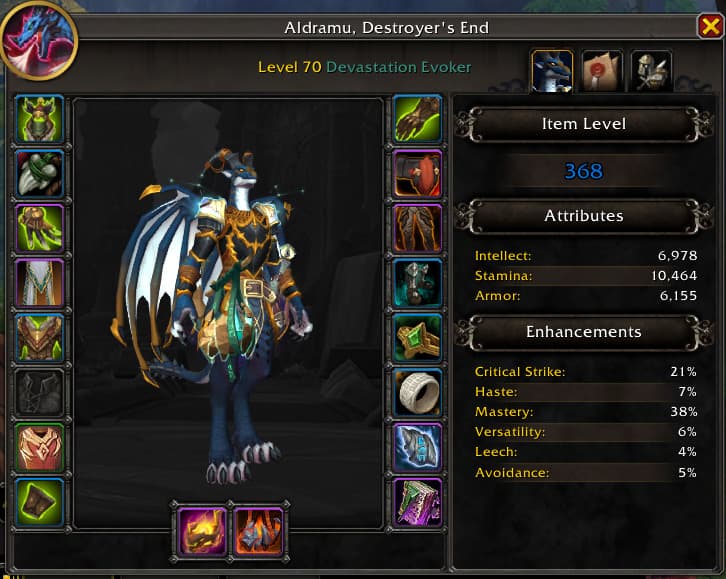
Have no fear, it's easy enough to make this number skyrocket. The first thing to do will be assessing what your lowest level armor pieces are at the moment. Consider those as priority replacement pieces. If we're talking about the main armor slots of head, shoulder, chest, hands, and legs then the probably has an easy solution: Crafting.
All the armor-based professions have a set of armor available at level 70. Craft these ahead of time as part of your normal profession grind and you'll instantly get a big boost of item level as soon as you ding 70.
The rest of the armor pre-raid will most likely come from a mix of crafted purples, world quest rewards, and Heroic dungeon gear. Another great source of easy and cheap gear is the Primal Storms offerings in Valdrakken, earned from turning in Storm Sigils and Primal Overload.
if you've hit that magic number, then congrats! It's time to jump into the raid pool.
LFR and finding a raid group
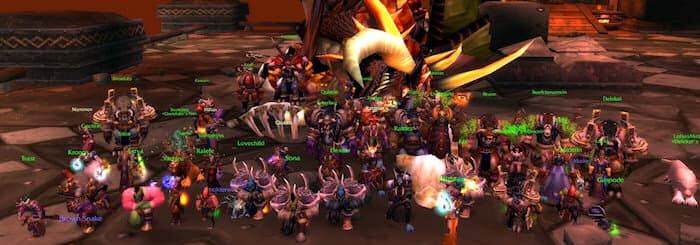
The act of raiding in World of Warcraft is a social experiment in and of itself. One part networking, another the literal attempt of herding cats, it may not seem like it that raiding is fun. However, the sheer energy off getting a boss kill or staying alive through particularly difficult mechanics is unmatched.
Dragonflight endgame raiding is no different. Let's look at what is available.

Dragonflight endgame LFR takeaways:
- LFR is a safe way to learn fights and get used to raid game speed
- There's a learning curve, so stay patient
- Premade groups offer greater rewards, and more risks
If you've never raided before then you might not be aware of what you really need to do to even get into a group. Looking For Raid eliminates some of this guesswork for folks looking to learn. Introduced almost a decade ago, LFR is essentially "Raiding for Dummies," and offers an instant group into a remedial difficulty version of the raid. This typically comes in the form of reduced damage or missing mechanics found in the Normal, Heroic, and Mythic raid difficulties.
If you truly have never been in a raid but want that sweet, sweet loot then we cannot recommend LFR enough. It's as safe a space to learn the mechanics, get used to group dynamics, and earn 376+ item level loot as there is. The downsides? It's very trial and error as, at any given time an LFR group will contain about a third of people who have never stepped foot inside the dungeon.
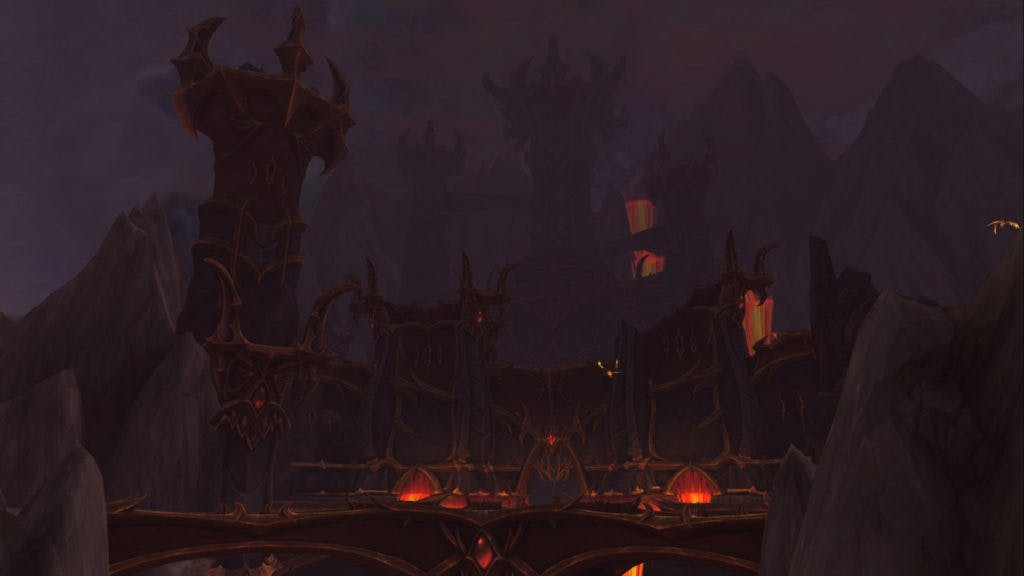
However, the Determination mechanic offered in LFR helps offset that issue. For each time your raid wipes on a boss the entire party gets a stacking buff that increases health and damage done. This resets upon beating the boss. However, it does provide a "bash head against wall" type of method for clearing content.
If you're the type to learn by doing and aren't in a guild then LFR is the safest of spaces for getting dirty. However, if you've moved past the usefulness of LFR and want to jump into Normal difficulty you need to know where to look.
Premade groups and you

The days of spamming trade chat for a raid group are over and the only other non-guild method of finding a raid group falls to the Premade Groups listing in the Group Finder tab. Sadly, this is basically a big ole meat market, with players queuing in hopes of being picked. If you're a tank or healer then you won't have long to wait.
However, for the rest of us that want to play DPS expect long wait times. Refreshing the listings will give the best look at what groups are available, what they're looking for, and how many bosses the group has already downed.
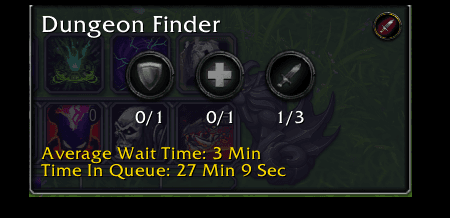
And if this doesn't sound fun then... Well, you're right. It sucks. However, this is the curse of pick-up groups and folks who are not actively in a guild that raids. That said, it doesn't have to be a bad experience. The advent of Discord being used by groups has made this weird gathering of complete strangers easier than in decades past. Likewise, we're at the point where many of these groups are made up of folks looking to gear up an alternate character.
Not to get ahead of ourselves, but it's sometimes easy to find yourself in a group where you're the only player who actually needs the gear. Still, luck of the draw is at play. My Survival Hunter managed to get up to 382 item level in just a week thanks to some extreme luck. Meanwhile, my Evoker has struggled to get out of the 360s.
Raiding: What do?
It's been a common idea in World of Warcraft since its inception, but there are social moraes at work that dictate how and what a player should do when raiding. Good players are ones that bring materials and potions to the raid, and know not to stand in fire, and drop a repair anvil for the raid. So on and so forth.
Youtuber Dan Olson of Folding Ideas fame talks about this at length in his excellent essay Why It's Rude To Suck At Warcraft. A lot of it shakes down to social and gameplay expectations that have formed over almost two decades of Warcraft, and this certainly includes raiding.
So, what can a player do to minimize not fitting into the crowd and messing up? It changes based on the fight, but all three roles feature some dos and don'ts. Let's go over them.

Dragonflight endgame raiding role takeaways:
- Tanks should expect to be the de facto babysitter and leader
- The key job of DPS is to stay alive at all costs while keeping up DPS numbers
- Pray for your healers and be kind to them
Let's start with tanks. The backbone of any dungeon group, the tank--whether they wish to be or not--almost always ends up as the leader of any group. After all, you're the one running in first and taking command of most of the mechanics. In any given encounter, a tank's job is to hold aggro against the boss, help mitigate damage through use of cooldowns, and balance the boss fight with their off-tank. This comes in the form of either exchanging aggro via taunt swapping, moving enemies around the room, or directing traffic and calling out mechanics.
In esports guilds this role is now actually taken by that of a spotter. The spotter is a member outside the raid, watching via stream and calling out mechanics, movement, damage spots, and more. It's all very NASCAR if I'm being honest. And while you won't have this option in a PUG group, a new tank should be talking. Communication with the healers, the other tank, and babysitting the DPS is key to killing bosses.

Speaking of DPS, your job is simple: Don't die.
....Oh, you wanted more than that? Fine.
So much of playing a DPS is maximizing your damage output while also not standing in things that can get you killed. This is especially true in Dragonflight endgame raiding, as blue circles, fire, ice, and other effects all come into play. The best and top DPS will be able to keep up damage and manage cooldown rotations while also not getting themselves killed.
This also means that you should get familiar with your healing and defensive cooldown options. One of the best things a DPS can do is help lighten the healing load required of your support. Some classes have this easier than others, such as priests, druids, and shamans. However, even hunters have a few buttons that get them out of danger, heal, or offer damage reduction.
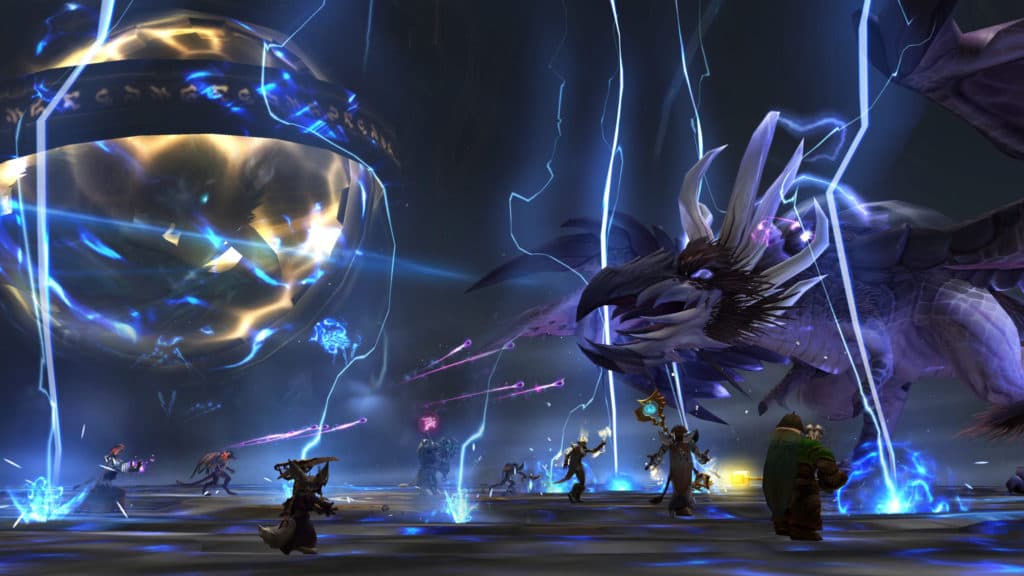
As for our healer friends... Look, I'm sorry. Raid healing is always one of the hardest assignments and it's certainly the most thankless. When a tank dies it's your fault. If a DPS stands in fire it's your fault. If another healer forgets to heal themselves then, that's right: It's also your fault.
That said, there's no greater role fueled by smugness or superiority than being a healer. Everyone stays alive because of you and, in many ways, a raid is only as successful as its healing group. The best things a healer can do is know the ins and outs of a fight so that they can plan their big heals for specific moments. Pre-healing and overhealing become key to the support role, requiring just a tiny bit of clairvoyance.
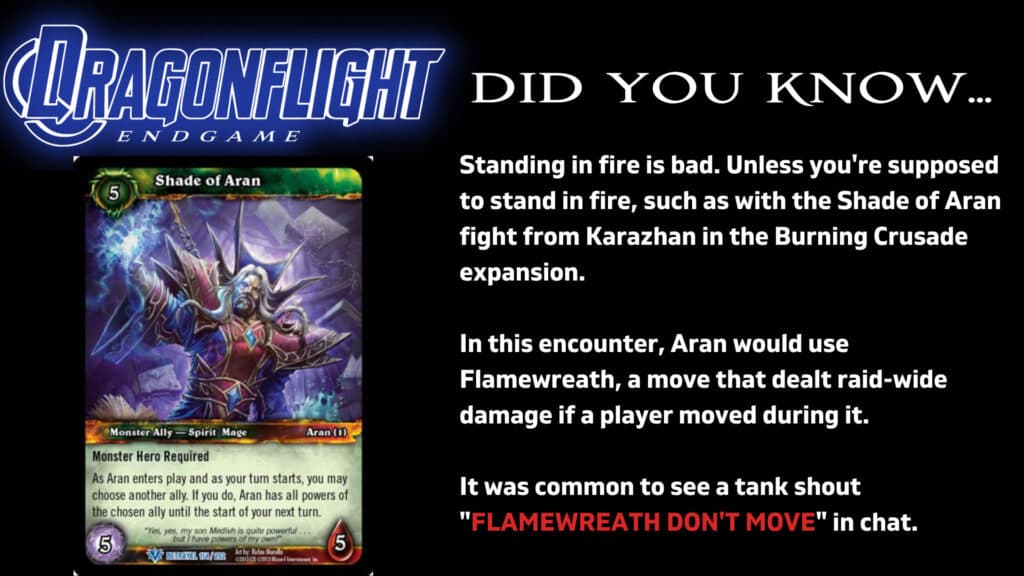
You should also know what your "oh crap, oh crap, oh crap" buttons are and when it's best to deploy them. For instance, the priest heal Holy Word: Salvation is a fantastic last-ditch button to heal the entire raid, but that 12-minute cooldown means that you need to know you're maximizing value.
But no matter if you're a tank, DPS, or healer: Know your encounters before hand. There's a wealth of videos and websites out there with quick and dirty information on every boss in the Dragonflight endgame. Certainly don't be afraid to ask questions and even speak up before a pull and go "Hey, so what's our plan here?" It never hurts to make sure everyone is on the same page. That said, you're most responsible for your own play.
On to Mythic+

Next week we'll continue the Dragonflight Endgame series by venturing into the murky world of Mythic dungeons. One part speedrunning, another part self-mutilation, Mythic+ is also some of the most rewarding content available in World of Warcraft.
Until next time, remember not to stand in the fire.
Keep tuned to esports.gg for more Dragonflight Endgame pieces.
